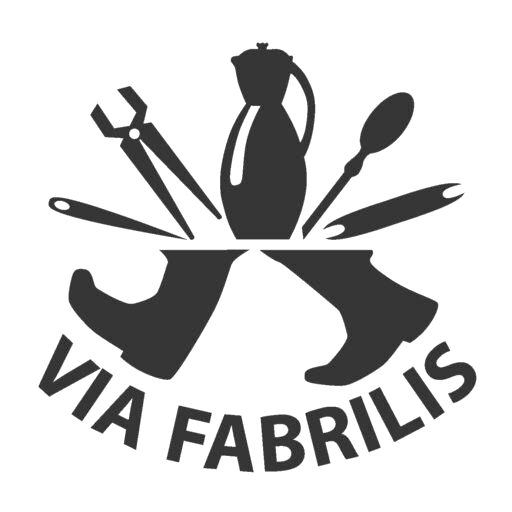In the years 1910-1911, a unique department store of the A. Wenke and Son company was built in Jaroměř. The building became known as the Wenke’s house, and today it houses the Municipal Museum in Jaroměř. Albert Wenke’s business was founded in 1882 and initially dealt with the production of decorative packaging, including very original goods decorated with sea shells. Over time, the business scope was expanded and included haberdashery trade. In 1905, the company’s founder Albert Wenke dies and the business is taken over by his son Josef. In 1909, Josef buys a vacant plot between houses No. 81 and 91, with the intention of building a modern department store that would provide convenient space for both buyers and employees. At the beginning of 1910, he received two building plans from his brotherin- law Josef Máša, a local builder. In April, he also invites cooperation of the then thirty-year-old architect Josef Gočár (1880-1945), who had a great influence on the design of the new building. The official opening of the new “A. Wenke and son” department store took place on May 4, 1911. Its product range was soon expanded to include footwear (representing Bat’a company), household goods, metal hardware, toys, stationery, baby carriages and other household appliances. At the back of the new building, a motor showroom was also set up, where Aero cars and Indian motorcycles were offered. The uniqueness of the building was amplified by the original elevator (recently renovated and still in use), which was used to transport goods and customers to the first and second floors of the store. The building is made of a reinforced concrete skeleton filled with bricks. The front elevation is suspended on the structure of the building. In this way, Josef Gočár was several years ahead of the French architect Le Corbusier. The interior uses only black and gray ornaments on a white background. To separate the sales areas on the second floor, to illuminate the doors to the terrace and to fill the skylights in the corridor, glass blocks were used – for the first time in Bohemia. The Wenke family’s department store survived the great economic depression of the 1930s, unfortunately at the expense of loans and credits, which the family was unable to repay after the crisis ended. In 1938, both houses in Husová Třída were sold at an auction. During World War II, the former department store served as a canteen for employees of the neighbouring Polický-Ricker factory, only to be taken over by the town of Jaroměř in 1946. Since 1947, the Wenke House has been the site of the Municipal Museum and Gallery. In 2017, the facility was declared a national cultural monument, and in the following years it underwent a thorough renovation. The new interactive permanent exhibition consists of several parts: The large hall on the ground floor evokes a period department store. There is a rich collection of the company’s original products. The exposition is complemented by texts about the history of the Wenke family and about Josef Gočár, the architect. The next exhibition is the “auto-moto” room. It is aimed primarily at children, but also contains information about the history of the department store’s automotive section. The former office room hosts an exhibition entitled “The boss’s office”. It is mainly dedicated to the surprisingly wide network of the Wenke company’s business contacts throughout Europe. A specific extension of the office is the “paper workshop”, where visitors can make replicas of the decorative boxes that the factory used to produce. The lounge of this exhibition part presents the “Via Fabrilis” project in an interactive way, showcasing collection fragments of Polish partner museums in Bolesławiec and Kłodzko. On the first floor you can admire the works of important artists associated with Jaroměř: the medallist and sculptor Otakar Španiel, the sculptor Josef Wagner and the painter Josef Šíma. A room on the third floor is dedicated to changing exhibitions on various topics. The exhibitions are always accompanied by an educational program for children and teenagers. The temporary exhibitions are complemented by a games room in the adjacent attic. In the summer months, you can relax on the newly opened terrace of the house or in the revitalised courtyard, which has a children’s playground, too. Souvenirs and regionally themed books can also be bought at the museum. Municipal Museum in Jaroměř – Permanent historical exhibition in Josefov The permanent historical exhibition is located on the second floor of the former supply office of the Josefov Fortress, built in 1788. Bread was baked on the ground floor, and food, grain and other staples for the military garrison were stored in the warehouses. The building was used as a food warehouse as late as the interwar period. After World War II, until 1992, it served as an equipment warehouse. The extended exposition shows the historical development of Jaroměř as a town of Czech queens, and the rise and growth of the Josefov Fortress. It includes many unique exhibits: an 11th century six-metre wooden boat, models of fortress gates, a rich collection of military items, Baroque and folk sculptures, as well as craft products of Russian POW’s from the period of World War I. Our ancestors’s lives are presented in painted folk furniture, portraits, as well as paintings and drawings depicting now-defunct parts of Jaroměř and Josefov. A rare urban complex of military buildings, the garrison church, as well as bourgeois tenement houses built in the classicist and empire styles encourage you to take a walk around this special fortress-city.







